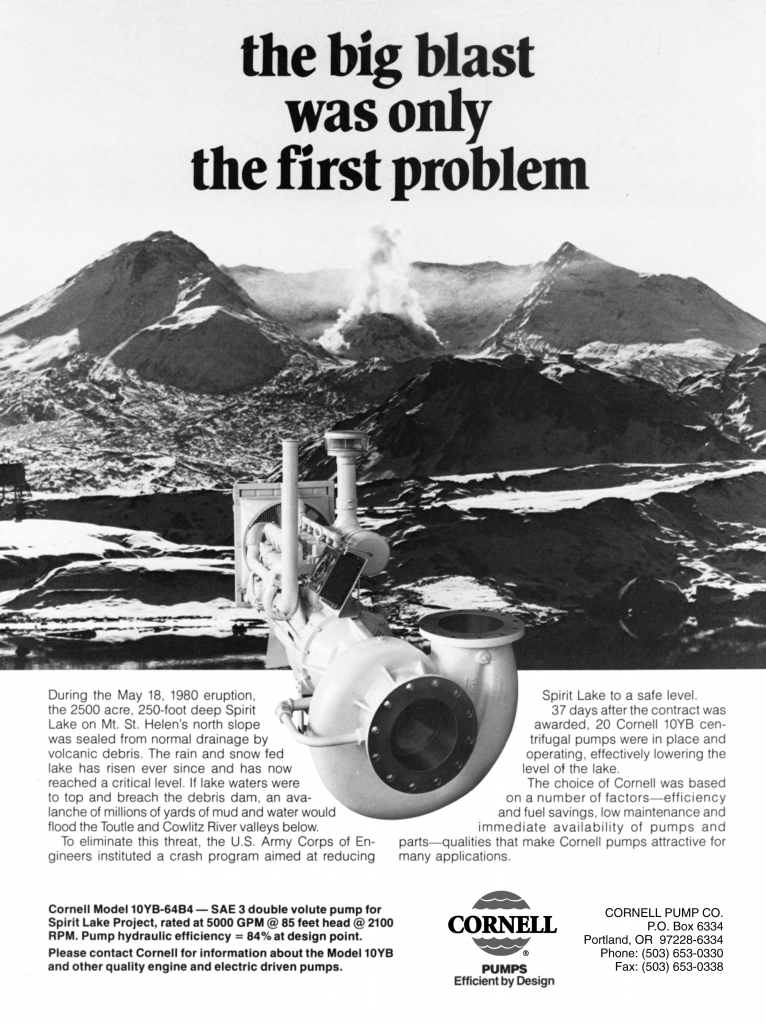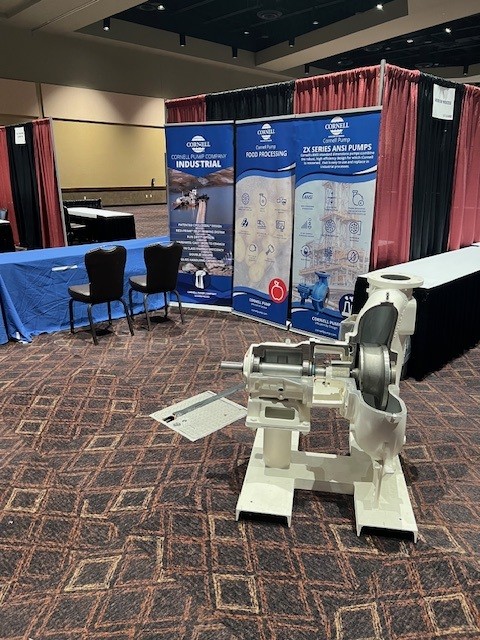Many may remember the eruption of Mt. St. Helens on May 18, 1980. Cornell Pump is located about 50 miles from the volcano as the crow flies, and the eruption was fiercely felt and imminently visible for our hometown. During that eruption, 57 people were tragically killed, the mountain blew more than 1,110 feet (335 m) off its top, and 3.9 billion cubic yards (3 billion meters cubed) of debris raced down the mountain into the surrounding landscape, choking off rivers and damming Spirit Lake, on the North flank of the mountain.

Those initial lahars (violent mudflows of earth, ice, snow, and water heated by the volcano) and subsequent smaller eruptions had created a dire situation by 1983. Debris had plugged the lake’s natural drainage and if the “earth dam” had been overrun it would have caused flooding and damage to the recovering towns below, with massive property damage and loss of life possible.
The Army Corp of Engineers called on Cornell to provide pumps that could be shipped very quickly, operate efficiently and reliability, and remove the massive amounts of water needed to reduce the breach risk. Cornell answered with 20 of our 10YB model pumps, removing more than 100,000 GPM—working within a month of the contract award.
See more Cornell accomplishments on our history timeline.



